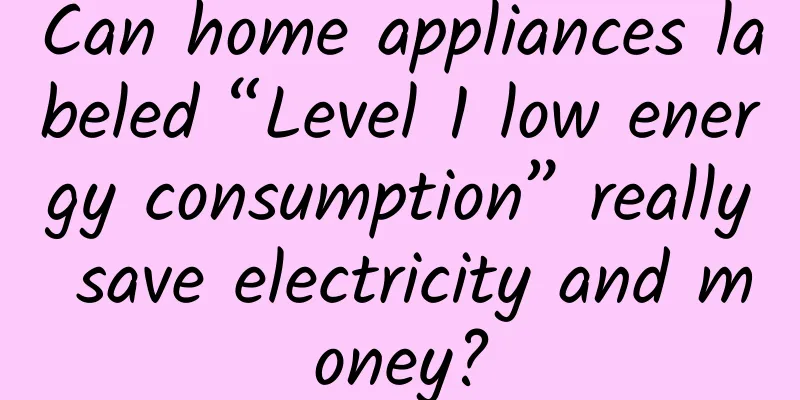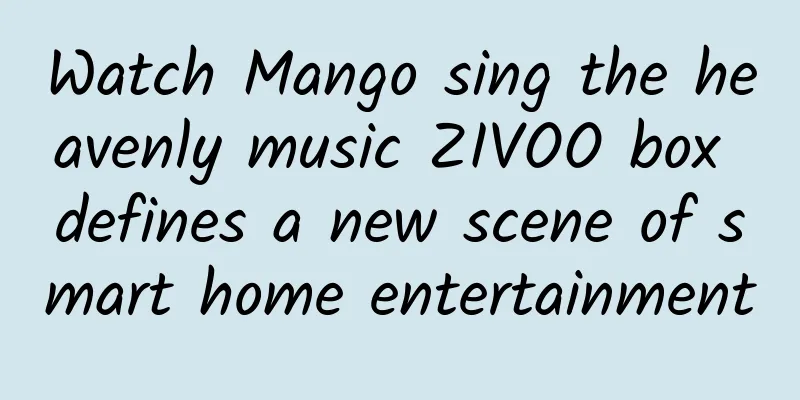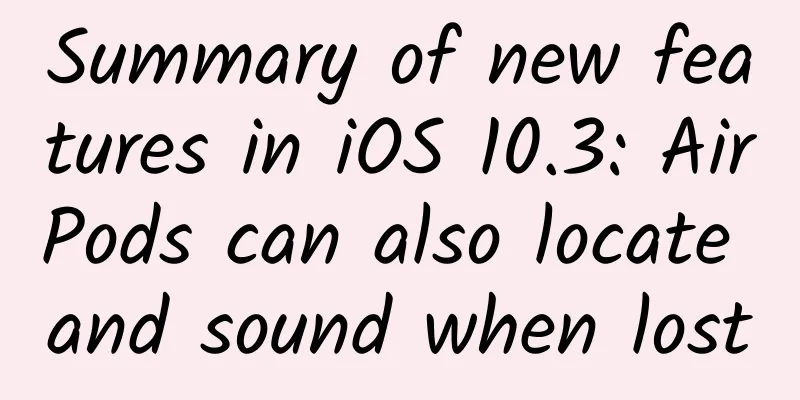Can home appliances labeled “Level 1 low energy consumption” really save electricity and money?

|
I don't know when it started, but a colorful logo is always attached to our newly bought refrigerators and air conditioners. In addition to the red or green bar graphs of different lengths, there are also a few big words "China Energy Efficiency Label". So, what is this energy efficiency label used for? What information does it contain? #1 What is Energy Efficiency Labelling? Energy efficiency label is the abbreviation of energy efficiency label. It is an information label attached to energy-consuming products themselves or their packaging to indicate the product's energy efficiency level and performance indicators. Image source: contracted photographer/IC photo Since the first promulgation and implementation of energy efficiency standards on March 1, 2005, our country has gradually expanded from the initial two products, refrigerators and air conditioners, to the current 22 energy-consuming products such as televisions, water heaters, rice cookers, induction cookers, etc. According to the characteristics of different products, energy efficiency limits and corresponding energy efficiency grades have been stipulated, and products are required to be accompanied by corresponding energy efficiency labels. #2 What information does the energy efficiency label contain? As an information label, the energy efficiency label directly indicates the energy efficiency level, energy consumption index and other important performance indicators of energy-using products. Let's take the energy consumption label of a washing machine as an example. First, the energy efficiency label indicates the name of the product manufacturer and the specification model. Source: Taken by myself Next is the most important energy efficiency level, which is also the most important indicator for judging whether an energy-using product is energy-saving. my country's energy efficiency label divides energy efficiency into five levels from 1 to 5. The smaller the energy efficiency level number, the higher the energy efficiency of the product, that is, the better the energy-saving effect and the more power saving. As shown in the figure, level 1 means that the product has the lowest energy consumption and is the most power-saving; level 2 means that the product is relatively power-saving; level 3 means that the energy efficiency of the product is at the average level of the Chinese market, and the energy-saving effect is medium; level 4 means that the energy consumption of the product is high and the energy efficiency is lower than the average level; and level 5 is the market access standard for this energy-using product in my country. Products with energy consumption levels higher than this will not be sold in China. Image source: contracted photographer/IC photo At the same time, in order to directly reflect the energy consumption of the product, the low energy consumption level is indicated in green, while the high energy consumption level is indicated in bright red, so that we can see it at a glance. The energy consumption level of the product itself is marked on the right side of the logo. Taking the energy consumption logo of the refrigerator in the figure below as an example, we can see that its energy consumption level is 1, which is the most energy-saving product. You can also check the energy consumption level of your own home appliances. Source: Taken by myself Finally, the energy consumption label also marks the important performance parameters of the product. Taking the refrigerator as an example, you can quickly learn its actual power consumption every 24 hours, the storage capacity of the refrigerator and freezer through the energy efficiency label. Therefore, from the refrigerator label in the picture above, we can know that the 24-hour power consumption of the refrigerator is 0.82 degrees, and the capacity of the refrigerator and freezer is 300 liters and 142 liters respectively, which should be a relatively large refrigerator. #3 Differences between the new and old energy consumption standards With the application of new technologies, the maturity of industrial production, and the control requirements for carbon emissions, our country's energy consumption standards for energy-consuming products have also been updated and developed in line with actual needs. The energy consumption standards for air conditioners, washing machines, flat-screen TVs and other products have been revised in recent years. The new energy efficiency standards are more stringent and have been greatly improved on the basis of the original standards to eliminate old equipment with higher energy consumption. Take the new energy consumption standards for air conditioners that came into effect on July 1, 2020 as an example: Image source: provided by the author The new energy efficiency standard first unified the standards for variable frequency air conditioners and fixed frequency air conditioners. At the same time, the original level 1 energy efficiency was downgraded to level 2 energy efficiency in the new energy efficiency standard, and the original lowest level energy efficiency products will be eliminated from the market and no longer allowed to be sold. At the same time, the state set a new level 1 energy efficiency for products with higher energy efficiency. At present, there are even a number of "super level 1 energy efficiency" products on the market. As the name suggests, the energy efficiency index of "super level 1 energy efficiency" products is much higher than the level 1 standard in the new energy efficiency standard. #4 How much electricity can Level 1 energy efficiency save? After learning about the energy efficiency labels and related knowledge of my country's home appliance products, everyone must be very curious about how much electricity a product with a high energy efficiency index can help us save. Let's take air conditioners as an example to perform actual calculations. Image source: Paixin Creative First of all, according to the second law of thermodynamics: heat cannot be transferred spontaneously from a low-temperature object to a high-temperature object. Therefore, the operating principle of the air conditioner is to transfer indoor heat to the high-temperature outdoors by consuming electrical energy. The energy efficiency index (energy efficiency ratio) of the air conditioner refers to the transferred heat power (cooling rate)/air conditioning power (power consumption rate). Taking the new energy efficiency standard for air conditioners in my country in 2020 as an example, if it is a 2P air conditioner, its cooling power is 4500W (4.5kw). The energy efficiency index (energy efficiency ratio) of level 1 energy efficiency products is 5, and the energy efficiency index (energy efficiency ratio) of level 5 energy efficiency products is 3.3. Image source: Paixin Creative Then, under rated power operation, the hourly power consumption of a Level 1 energy efficiency product is 4.5/5=0.9 degrees, while the hourly power consumption of a Level 5 energy efficiency product is 4.5/3.3=1.36 degrees, a difference of 0.46 degrees. If we calculate based on running the air conditioner for 6 hours a day, the daily power consumption difference is 2.76 degrees. Of course, most of the air conditioners on the market are variable frequency air conditioners. The actual energy efficiency of the air conditioner will change with the change of the indoor and outdoor temperature difference. The actual energy saving degree is less than 0.46 degrees/hour, but it still greatly reduces energy consumption during actual operation. Image source: Paixin Creative Different household appliances have different energy consumption and energy efficiency standards, so the energy saving ratio and energy saving amount of products with different energy consumption levels are different. For example, for a refrigerator with a capacity of 300 liters, the energy consumption of a level 1 energy consumption product is about 0.65 kWh per day (24 hours), while the energy consumption of a level 2 energy efficiency product is about 0.78 kWh per day (24 hours), and the daily power consumption difference is 0.13 kWh. However, even if the energy saved is small, it is very meaningful. After all, China is a country with a large population, complete infrastructure and developed economy. Even if each person can save 0.01 kWh of electricity per day, it will be an astronomical figure accumulated over a year. Source: Chongqing Science and Technology Museum The author of this article: Hu Anbang, a world-renowned runner in nuclear engineering. Statement: Except for original content and special notes, some pictures are from the Internet. They are not for commercial purposes and are only used as popular science materials. The copyright belongs to the original authors. If there is any infringement, please contact us to delete them. |
<<: Don’t take “drinking water” lightly, drinking more water has these 7 great benefits!
>>: Ecological beauty adds green to the world's largest clean energy corridor
Recommend
Yan Ning's students talk about: What should I do if I want to give up my doctoral studies? What path should I choose after graduation?
The Women in Science Forum is now in its seventh ...
In Microsoft's eyes, XBOX is actually such a role...
There is no doubt that in the battle for the next...
Is postpartum depression just pretentious?
This is the 4672nd article of Da Yi Xiao Hu After...
Actual combat case | 11 steps to build a product data operation system
This article will explain in detail the "11 ...
Can’t use your phone during thunderstorms? Don’t be fooled by rumors!
Produced by: Science Popularization China Produce...
Research suggests that pollution caused by AI could cause 600,000 asthma cases and 1,300 premature deaths in the United States
A major study found that by 2030, the electricity...
Apple iOS 14.8/iOS 15.x will soon launch App Privacy Report: All App behaviors will be clearly visible
[[428338]] IT Home reported on October 12 that ac...
How to design the app opening page? Let’s look at these 5 common methods
It only takes 50 milliseconds (0.05 seconds) for ...
If the oil pan catches fire, would you choose to pour water, flour, or oil?
Tadpole found that even adults with a strong sens...
Is the second COVID-19 infection coming? Make good drug reserves! Zhang Wenhong's latest statement
According to CCTV News, as of April 18, at least ...
How much does it cost to join the Heyuan prenatal education mini program? What is the price for joining the Heyuan prenatal education mini program?
For entrepreneurs, although mini program developm...
NIO: 4Q19 earnings call analysis: Why losses are getting worse despite rising sales
On March 18, 2020, NIO officially released its fo...
SEM promotion: How to do target audience analysis?
Doing a good analysis of your target groups (cons...
"Dauntless" rushes towards the sun, how does Parker fly "sunskimming"?
Author: Huang Xianghong Duan Yuechu In the grand ...









